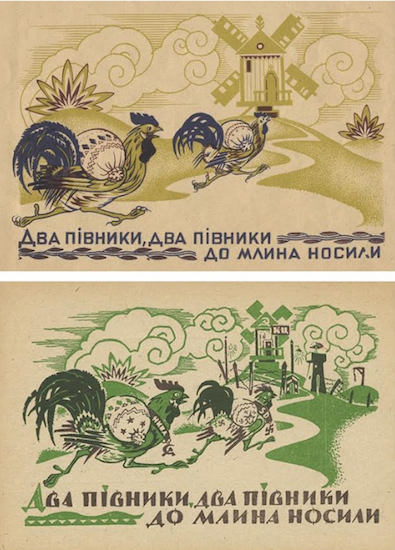Brooklyn Antiquarian Book Fair: Ukrainian anti-Nazi, anti-Soviet propaganda postcards demonstrate how history unfolds on paper
Brooklyn BookBeat: September 8-10 at the Brooklyn Expo Center In Greenpoint

Emil Allakhverdov’s Anti-Nazi, Anti-Soviet postcard collection includes this illustration of roosters from the children’s book (top) reconfigured as Nazi and Soviet secret police (bottom) who are taking bags of victims to be ground in the millstones of the concentration camp.
“Two bears, two bears, thrashed the peas,
Two roosters, two roosters took it to the mill,
And the sparrow, a fine fellow, played the fiddle.”
Where had he seen them before? Among the collection of a thousand books Emil Allakhverdov acquired at auction was a little gem – a children’s book titled “Fun World, A Folk Song,” The drawings, illustrating a song in the book, “Two Bears, Two Bears,” looked very familiar. And then, it dawned on him.
